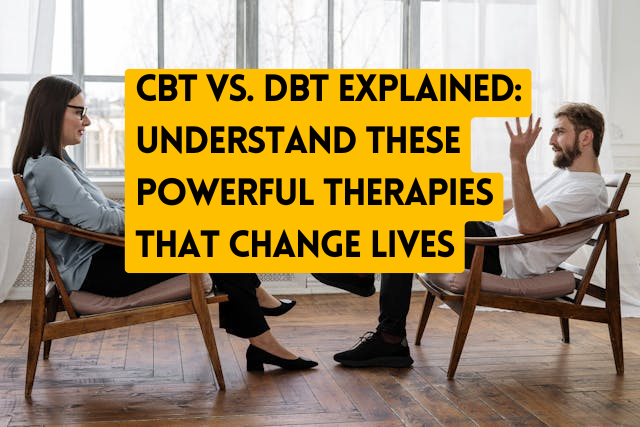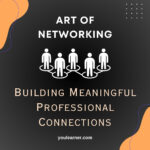Why Understanding CBT and DBT Matters Today
In a world where anxiety, stress, depression, and emotional struggles have become all too common, two therapeutic frameworks have emerged as game-changers in mental health: Cognitive Behavioral Therapy (CBT) and Dialectical Behavioral Therapy (DBT).
While both are grounded in behavioral science and offer structured, goal-driven approaches, they’re not the same—and knowing the differences can be the key to choosing the right path for healing.
Whether you’re someone exploring therapy options, a student of psychology, or simply curious about how these therapies work—this post will give you a foundational yet practical overview of both CBT and DBT, including their origins, techniques, applications, and differences.
🧱 1. What is Cognitive Behavioral Therapy (CBT)?
CBT is a structured, time-limited therapy that helps individuals identify and change negative thought patterns and behaviors. It’s based on the premise that our thoughts, feelings, and actions are interconnected—and by changing the way we think, we can change how we feel and act.
📌 Key Principles:
- Cognitive distortions fuel negative emotions
- By becoming aware of these thoughts, we can challenge and reframe them
- Behavior change follows from thought change
🧠 Common Cognitive Distortions:
- All-or-nothing thinking (“I always mess up”)
- Catastrophizing (“Everything will go wrong”)
- Overgeneralization (“This happened once, so it’ll always happen”)
🧪 2. Techniques Used in CBT
📝 1. Cognitive Restructuring
Identifying irrational thoughts and replacing them with more balanced, realistic ones.
Example: “I failed this test, so I must be stupid” → “One test doesn’t define my intelligence.”
🧭 2. Behavioral Activation
Engaging in positive activities to counter depression and avoidant behavior.
Example: Scheduling social or enjoyable tasks to rebuild motivation.
📈 3. Exposure Therapy
Used especially for phobias, PTSD, and anxiety—gradually facing feared situations.
Example: Someone afraid of flying might start by watching a video of a plane takeoff.
🧰 4. Homework Assignments
Between sessions, clients are given tasks like journaling, thought tracking, or practicing coping strategies.
🕰️ 3. Origins and Evolution of CBT
- Developed by Aaron T. Beck in the 1960s as an evolution of traditional talk therapy.
- Initially used to treat depression, it has since expanded to anxiety disorders, OCD, substance abuse, eating disorders, and more.
CBT is now considered a “gold standard” in psychotherapy with thousands of clinical studies backing its effectiveness.
🌊 4. What is Dialectical Behavior Therapy (DBT)?
DBT is a modified form of CBT developed by psychologist Marsha Linehan to specifically treat people with intense emotional responses, especially those with Borderline Personality Disorder (BPD).
The word “dialectical” means balancing two opposing truths—acceptance and change—which is the heart of DBT.
🔑 5. Key Components of DBT
⚖️ 1. Dialectics
Holding two seemingly opposite ideas (e.g., “I am doing my best” and “I need to do better”) without invalidating either.
🧘 2. Mindfulness
Staying present and aware of emotions, thoughts, and surroundings nonjudgmentally.
📉 3. Emotion Regulation
Learning how to name, manage, and reduce the intensity of emotional experiences.
🛑 4. Distress Tolerance
Coping with pain and crises without resorting to self-destructive behaviors.
🧍 5. Interpersonal Effectiveness
Communicating needs clearly and respectfully, setting boundaries, and maintaining relationships.
🧠 6. Structure of DBT
Unlike traditional CBT, DBT involves:
- Individual therapy sessions
- Group skills training
- Phone coaching
- Therapist consultation teams
DBT programs are typically longer-term (6–12 months minimum) and are highly structured.
🧩 7. Major Differences Between CBT and DBT
| Feature | CBT | DBT |
|---|---|---|
| Core Focus | Thoughts and beliefs | Emotions and acceptance |
| Ideal For | Depression, anxiety, phobias, OCD | BPD, self-harm, emotional dysregulation |
| Skill Categories | Cognitive restructuring, behavior change | Mindfulness, distress tolerance, emotion regulation |
| Therapist Role | Teacher, challenger | Ally, coach |
| Session Format | 1:1 therapy + homework | 1:1 + group + crisis coaching |
📊 8. Who Benefits From CBT?
- People with mild to moderate anxiety or depression
- Individuals who like structured, goal-oriented therapy
- Clients who are motivated to work on thought patterns
CBT is great for someone who wants short-term therapy with measurable results.
📊 9. Who Benefits From DBT?
- Individuals struggling with chronic emotional dysregulation
- Those engaging in self-harm, suicidal ideation, or unstable relationships
- People who’ve tried other therapies without success
DBT is ideal when emotions frequently spiral out of control or when self-destructive coping methods are common.
🏥 10. Clinical Effectiveness of CBT and DBT
🧬 CBT:
- 60–80% of clients show significant improvement in anxiety and depression
- Strong results in short spans (8–12 sessions for mild cases)
- Endorsed by the American Psychological Association and NHS UK
🧬 DBT:
- Up to 90% of clients with BPD show reduced self-harm behaviors
- Proven effective in reducing suicide attempts, emergency visits
- Now used in treating eating disorders, addiction, PTSD, and adolescents
🧰 11. Practical Applications in Daily Life
CBT Example:
You notice yourself thinking, “I’m such a failure.”
👉 You identify it as catastrophizing and replace it with: “I made a mistake, but I’m learning.”
DBT Example:
You’re feeling intense anger and urge to lash out.
👉 You use distress tolerance techniques like deep breathing, distraction, or holding ice cubes to manage the urge.
💡 12. How to Choose Between CBT and DBT
Ask yourself:
- Am I struggling with negative thinking or intense emotions?
- Do I need short-term help or long-term skills?
- Have I tried therapy before—what worked and what didn’t?
You can even combine elements of both therapies in integrative therapy—many therapists use DBT-informed CBT or vice versa.
📚 13. Resources to Learn More
CBT:
- “Feeling Good” by Dr. David Burns
- “Mind Over Mood” by Dennis Greenberger
- Websites: Psychology Tools, Anxiety Canada
DBT:
- “The DBT Skills Training Manual” by Marsha Linehan
- “The Dialectical Behavior Therapy Skills Workbook” by McKay, Wood, Brantley
- DBT Self-Help websites and apps like MoodTools, DBT Diary Card
🧭 14. What the Future Holds
CBT and DBT have both influenced modern psychotherapy deeply. The next generation of therapy—blended with AI mental health tools, mindfulness apps, and trauma-informed care—often stands on the foundation built by these two giants.
We’re also seeing culturally adapted CBT, online DBT group programs, and hybrid models making mental health more accessible than ever.
✅ Conclusion: Two Tools, One Goal—Healing
CBT and DBT are not opposing forces. Think of them as tools in a toolkit—each with unique strengths.
- CBT teaches you to reframe your thoughts.
- DBT helps you ride emotional waves without drowning.
Whether you’re seeking personal healing, professional growth, or academic insight, understanding these therapies empowers you to make informed, compassionate decisions—for yourself or others.







